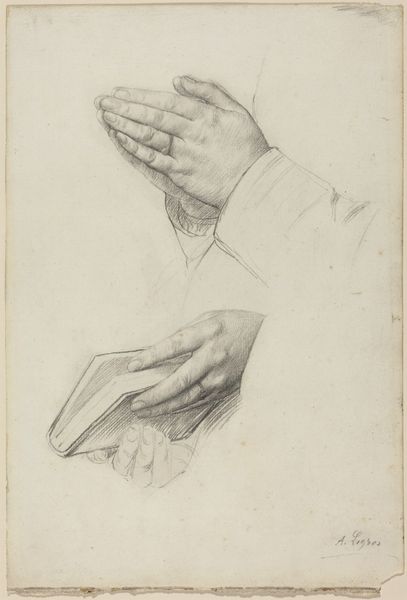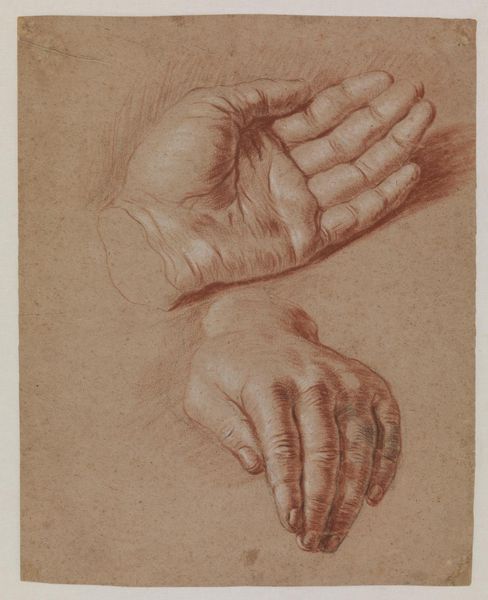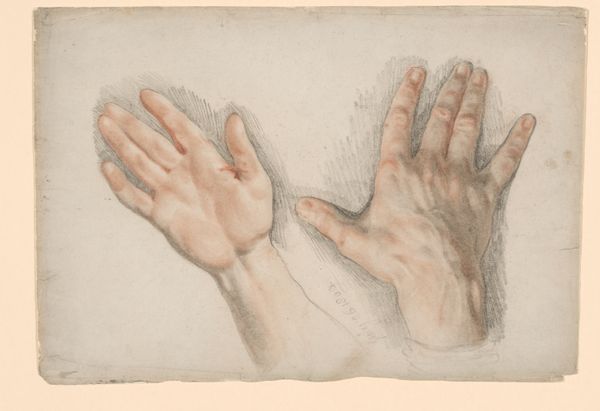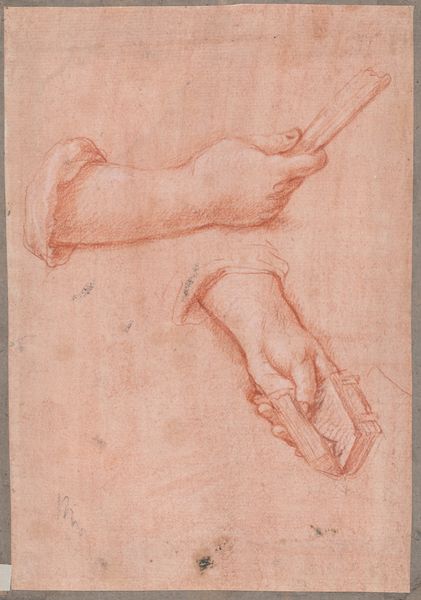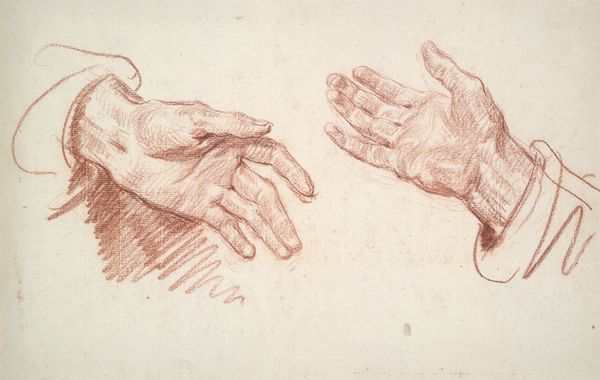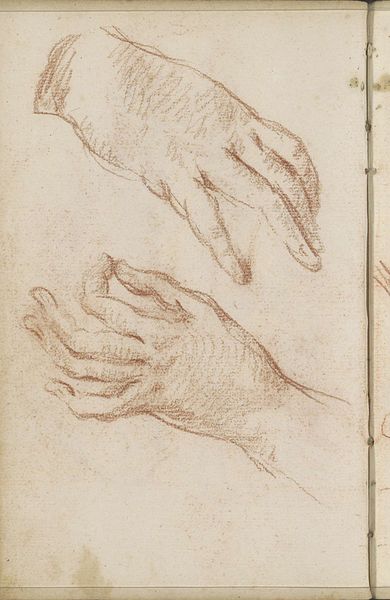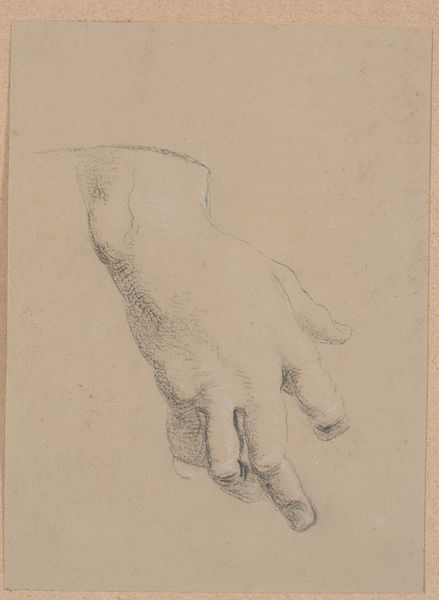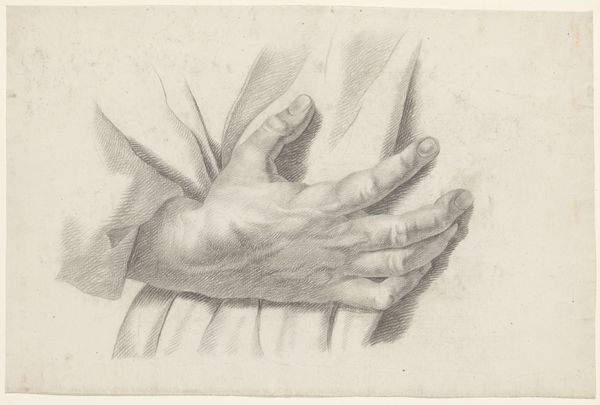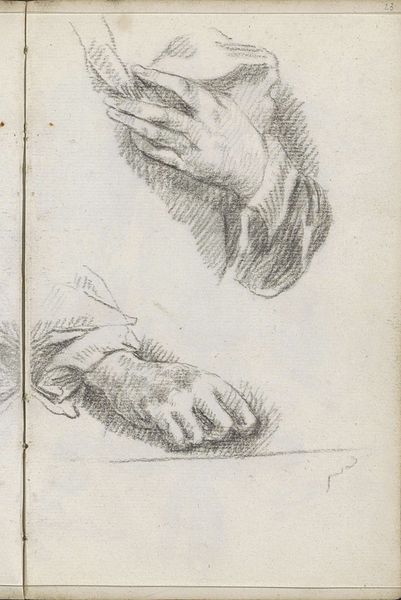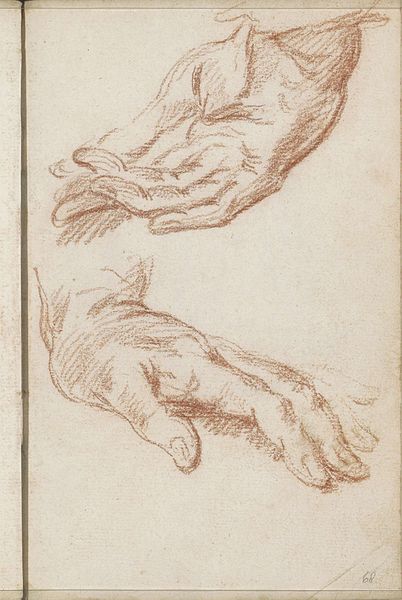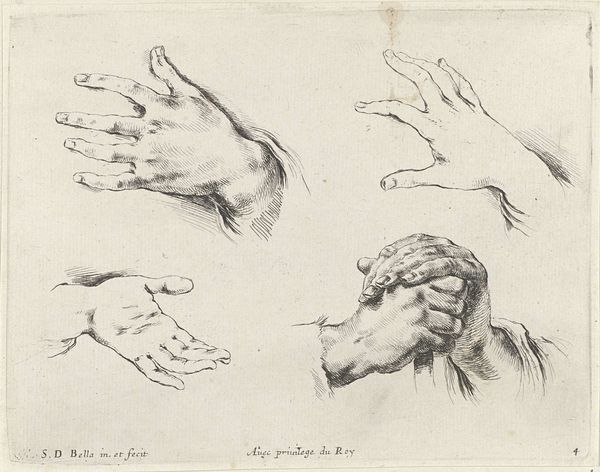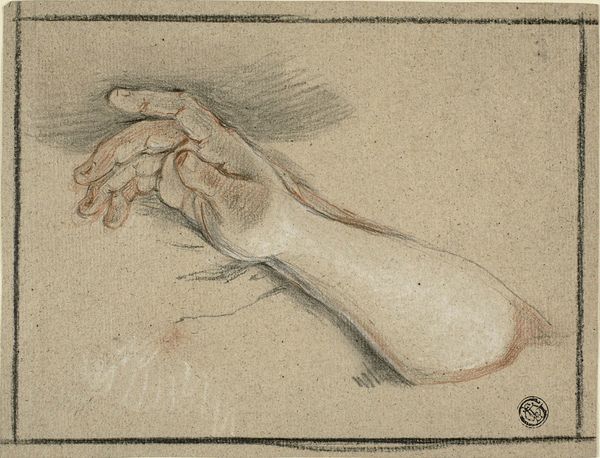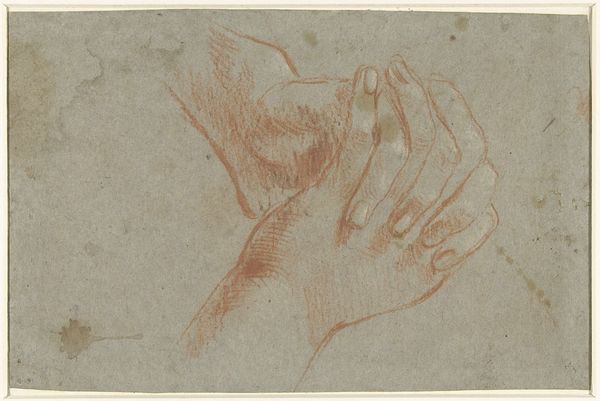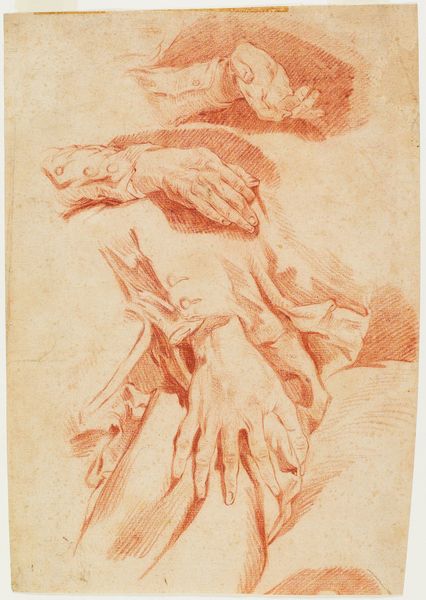
drawing, chalk, charcoal
#
portrait
#
drawing
#
charcoal drawing
#
figuration
#
form
#
11_renaissance
#
chalk
#
line
#
charcoal
Copyright: Public Domain
Editor: So, this is "Four Studies of a Right Hand" by Hendrick Goltzius, made around 1588. It's a drawing using charcoal and chalk. The detail is amazing, you can almost feel the age in these hands. What catches your eye in this piece? Curator: Immediately, the hands themselves. The Renaissance, with its rediscovery of classical ideals, saw the hand elevated as a symbol of skill, creation, and even divine power. Think of Michelangelo’s "Creation of Adam." How do these hands compare? Do they evoke a similar feeling? Editor: I see what you mean about the skill involved. But the hands in this drawing, they don’t strike me as powerful or divine. They seem… older, more worn. There’s a fragility to them. Curator: Precisely. While Renaissance art often idealized the human form, Goltzius, working a bit later, presents a more realistic, perhaps even vulnerable, view. Look closely at the lines. Note the way he uses light and shadow to depict the wrinkles and veins. What story do these details tell? Editor: They speak to the labor and life these hands have lived. They’ve held things, built things, created things perhaps? The positions too. They are not in the “giving” position. It is not an idealized depiction. Curator: That's perceptive. Consider also the historical context. The late 16th century was a time of immense upheaval in Europe – religious wars, economic shifts, and challenges to established authority. Could these hands represent the weariness of the era? Or perhaps, Goltzius is just exploring human form beyond the idealistic constraints. Editor: That's an interesting thought. It definitely makes me look at them differently. From an exercise to cultural artefact? Curator: Exactly! Seeing beyond the surface into the deeper currents of cultural memory that artwork embodies. It speaks to human skill but adds fragility. Editor: I'll never look at a simple hand study the same way again!
Comments
stadelmuseum about 2 years ago
⋮
During the last two decades of the sixteenth century, Hendrick Goltzius, the draughtsman, copper engraver and painter who worked in Haarlem, became one of the most influential and famous artists in Europe as a result of the prints he created and published himself. 'Haarlem Mannerism' was defined by a brilliant graphic technique and an elaborate, highly stylised language of forms. This was the basis for the international success of the style, and Goltzius was its main representative.'Four Studies of a Right Hand' was created in the first instance as a reference sheet to provide the artist and his staff with assistance when depicting hands, which, apart from the facial features, are the most expressive elements in portraits and figural representations. At the same time, however, it should also be seen as a masterful example of the art of drawing. Goltzius has created an almost hyper-realistic effect with just two different-coloured chalks. The coloured detailed working is three-dimensional and the anatomical accuracy is maintained even in physical details such as the prominent arteries - and is further heightened by its fragmentary nature and the contrast to the sleeves, which merge with the abstract surface of the paper. The stylised and "Manneristically" affected positions of the hands enhance the realism of how they are rendered.Goltzius's hands had been crippled since childhood as a result of accidentally falling into glowing coals. His brilliant craftsmanship, which he was repeatedly able to demonstrate, greatly increased his fame and can be understood at least in part as a reaction to this disability. This drawing in the Städel's Collection of Prints and Drawings thus gains a special significance, given that the bottom hand of the four corresponds to the multiple pen-and-ink drawings Goltzius made of his crippled right hand: the fingers were curled inwards and he was unable to stretch them out. He seems, therefore, to have depicted his own hand in this drawing and to have sought a use for its disability. This he found while leafing through a book - that is to say, the top hand, which shows a relatively conventional gesture, portrays his right hand in an ideal state, without injury.
Join the conversation
Join millions of artists and users on Artera today and experience the ultimate creative platform.
